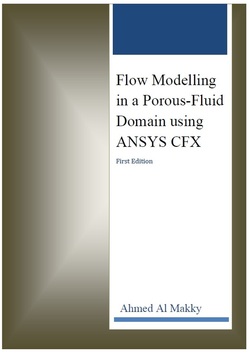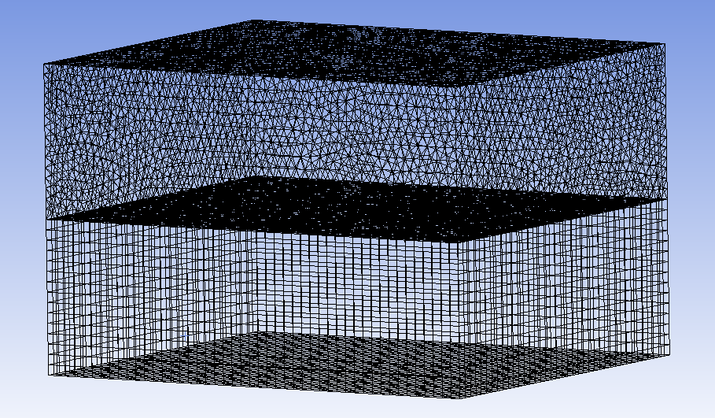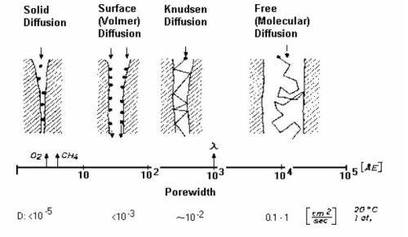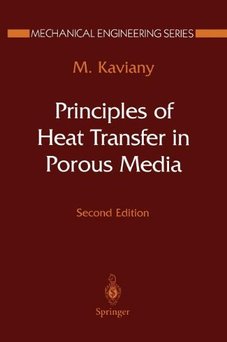Flow Modelling in a Porous-Fluid Domain
Important notes
1- Please don’t send me an email asking me to send you tutorials, what is available has been uploaded on the website.
2- I would very much appreciate any feedback about the tutorials, and your contribution will be stated in the tutorial, I plan to update the tutorials.
1- Please don’t send me an email asking me to send you tutorials, what is available has been uploaded on the website.
2- I would very much appreciate any feedback about the tutorials, and your contribution will be stated in the tutorial, I plan to update the tutorials.
A new blog has been setup for additional comments and to insure interaction between researchers.
Tutorial on Flow Modelling in a Porous-Fluid Domain Using ANSYS CFX
|
This is the first draft of the tutorial feed back is much appreciated. It has mistakes and is complex you can use it to apply it to your studied problem. The end result gives you temperature differences with time. The difference is between two slides at different seconds. You will need a while to understand it, so try doing it over and over again. The tutorial is made up of the following: It covers dealing with two domains one fluid and one solid. It covers unsteady flow case. It covers momentum and heat transfer in a flow.
It deals with porosity and permeability It deals with running parallel simulations. It coves data analysis of unsteady flows. Some recommended useful theory is found in the link. |
Tutorial Geometry
You can download the tutorial geometry by clicking on the image below.
Interfacial Length Scale
That depends on the length scale region of interaction between two phases, to understand the interfacial length scale is advisable to read through the Inhomogenous Model. The image below shows how diffusion occurs according to pore size. The smallest pores have the case of solid diffusion, secondly comes after the surface (volmer) diffusion then comes the Kundsen diffusion and finally the biggest pore size the free (molecular) diffusion.
Heat Transfer Coefficients
To select heat transfer coefficients the researcher can follow the material in this link.
Time Step Calculation Example
If a particle wants to travel a distance of LX =1 m in a porous domain, having in mind that DX=0.001 m and the number of cells the particle has to travel through is M=1000, knowing that the velocity is V=1e-7 calculate the required time step for the simulation.
Solution
Based on the velocity equation
V=LX/dt
The calculated time step value will be
dt = (M*DX)/V = 1e7 (sec)
Its is clear that the calculated number for time is big
dt = 115.7 (Days)
This shows that it would require 115.7 days for the particle to travel from one side of the porous domain to the other.
While for studying the required time for the particle to get from one end of the cell to the other side requires
dt = (DX)/V = 1e3 (sec)
V=LX/dt
The calculated time step value will be
dt = (M*DX)/V = 1e7 (sec)
Its is clear that the calculated number for time is big
dt = 115.7 (Days)
This shows that it would require 115.7 days for the particle to travel from one side of the porous domain to the other.
While for studying the required time for the particle to get from one end of the cell to the other side requires
dt = (DX)/V = 1e3 (sec)
ANSYS Thin Film Fluid Simulation
Have a look on the solved example on page 199.
Recommended Reading List
|
Many Thanks to the Author. This book is intended for researchers , the book can be used to study the mass diffusion and the aeration process of soil ,also for problems relating to the field of petroleum engineering. Civil engineers can find it also beneficial when working on geotechnical problems. While Calculating heat exchange in compact heat exchangers this book can be your companion.
|
Unless otherwise noted, all content on this site is @Copyright by Ahmed Al Makky 2012-2018 - http://cfd2012.com



